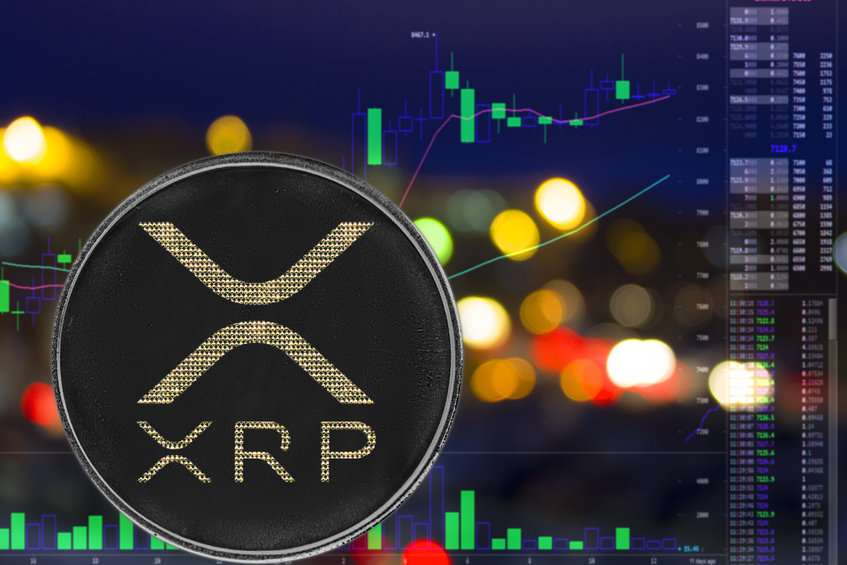
Der Januar gibt keinen Grund zur Freude. Doch der letzte „rote“ Februar ist acht Jahre her. Können Trader also hoffen?

Finanzmittel Info + Krypto + Geld + Gold
Krypto minen, NFT minten, Gold schürfen und Geld drucken

Der Januar gibt keinen Grund zur Freude. Doch der letzte „rote“ Februar ist acht Jahre her. Können Trader also hoffen?

Over the last few months, many of the cryptocurrencies have been bearish, with major ones like Bitcoin and Ethereum also nosedive.
At the time of writing, Ripple price was had dropped by about 5.27% with a hitting a high of $0.6185 and a low of $0.5828 in the last 24 hours.
Now let’s take a look at the reasons behind the nosedive.
Before we delve into the recent bearish trend, it’s important we first explain what Ripple is for those coming across it for the first time.
Ripple is a company that runs a digital blockchain-based payment platform called RippleNet that uses XRP as its native cryptocurrency.
Despite having issues with the US SEC, Ripple has partnered with a number of financial service providers to make cross-border transactions seamless, traceable, and affordable,
Most investors are bearish on XRP following a three months-long nose dive.
However, although Ripple has been the most controversial blockchain-based project for a while, the token has remained in the top ten position cryptocurrency in the market.
According to CoinMarketCap, the trading volume was up 6.72% despite a 5.31% drop by market cap. The surge in the trading volume is mainly attributed to an increase in the selling volume as the token price drops.
Ripple had attempted a bull run at the beginning of October after a partnership between Nelnet and Ripple to lower the impact of cryptocurrencies on the environment. But the Bull Run was very short-lived. It only took days for XRP to turn bearish.
Today, XRP has hit a high of $0.6021 and a daily low of $0.58 which is being attributed to the increased selling pressure.
The post Here is why Ripple (XRP) has been dropping in the last three months appeared first on Coin Journal.

Trennt man Blockchain und Krypto voneinander, kann man die vielfältigen Möglichkeiten nicht ausschöpfen, wie die türkische Rechtsexpertin Elçin Karatay gegenüber Cointelegraph erklärte.

Es gibt nicht genug Bitcoin für alle Millionäre auf der Welt, wenn jeder von diesen einen besitzen wollte, so Bukele.

Medvedev is a former Russian president and prime minister and currently the Deputy Chair of the Security Country.
Russia’s intention to ban cryptocurrencies has elicited reactions from across the board, with many other people voicing opposition to the move for various reasons.
Former Russian president Dmitry Medvedev, who also had a stint as the country’s prime minister, has added to the many who think the move would not be the best course of action from Moscow.
Medvedev is also Russia’s Security Council deputy chairman.
In an interview with Tass, he noted that he believes central bank regulators will find a better way to deal with the matter. However, he said that he doesn’t think the restrictions will achieve what regulators aim at.
According to Medvedev, calls from the Bank of Russia around crypto regulation that seek to see crypto-related activities banned could end with the opposite effect to the desired results.
“To be honest, when you try to ban something, this very often leads to the opposite result,” he told Tass.
Medvedev’s comments come just days after Russian President Vladimir Putin asked the central bank, and other government regulators, to strike a consensus on the proposed regulation of cryptocurrencies.
In its report on crypto and related activities in Russia released on 21 January, the central bank noted what it called risks and threats, and proposed a total ban. With this move, the country would not allow activities such as trading, mining, and usage.
Among those against the proposed ban are Maxut Shadayev, the Minister for Digital Development, and Anatoly Aksakov of the State Duma. The Russian Association for Electronic Communications (RAEC) also released a statement opposing the plans, noting that the ban risked sidelining Russia and slowing down innovation in the country.
According to Shadayev, a total ban could see the country lose experts and specialists in the innovation space. Meanwhile, Aksakov wants to see cryptocurrencies declared legal, with the government putting in place mechanisms to strictly monitor and supervise the industry.
Russia is not the only country to consider banning cryptocurrencies or adopting stricter regulations.
India had a bill seeking a crypto ban reconsidered earlier in the year, while in 2021, China embarked on a severe crackdown on the crypto sector. The Chinese crackdown forced miners and major crypto companies to relocate to other countries as authorities banned crypto mining and trading.
The US has so far not indicated taking such a move, but industry experts say the country could adopt tougher regulations following recent reports on the sector.
Despite the regulatory uncertainties, many within the crypto sector and across mainstream institutions believe crypto and the underlying blockchain technology ‚is here to stay.‘
The post Russia banning crypto could have an opposite effect, former president Medvedev warns appeared first on Coin Journal.